TERMS OF USE: There is a chance that some of the content on this page has changed since it was last updated. By reading this article, you consent to our Terms of Use and Disclaimer. Happy Travels!
DISCLOSURE: Some of our posts may contain affiliate links which we may receive a commission if you choose to book something through one of our links.
Our inspirational blog post highlights our top interesting facts about Peru which we think everyone needs to know!
I love my chips! If I could have my way, I would happily spend my entire day gorging on several plates of freshly home-made chips…
…and I have Peru to thank for this heavenly potato comfort food, specifically the Incas!
The Incas in Peru were the first to cultivate potatoes. And not just potatoes – tomatoes, peppers, and so much more! When the Spanish conquered the region in the 1500s, they shipped it all back to Europe. Peru also gave us so much more, including the Pisco Sour, peanuts, not to mention the impressive Machu Picchu, even a mountain of rainbows – yes rainbows!
We spent several months traveling around Peru and completely fell in love. We spent a lot of time exploring the gay scene of Lima, Cusco, Arequipa, traveled in the Amazon, and took the Inca Trail to Machu Picchu.
We hope our fun facts about Peru will inspire your own Peruvian adventure!
1. The Inca civilization originated from Peru
Peru is famous for Machu Picchu, an impressive citadel built in the 1400s by the Incas, an ancient civilization that came from the Peruvian highlands in the early 1200s. The Incas ruled Peru for over 300 years until the Spanish conquered them in 1572.
At its peak, the Incas were one of the largest Empires in the world. To give you an idea, at its peak, this mighty Empire covered a large chunk of South America beyond Peru including modern-day Ecuador, Bolivia, Argentina, and Chile!
Cusco was considered the heart and soul of the Inca Empire. It was their capital, built under the Inca ruler Pachacutec. When the Spanish invaded, they kept the Inca foundations of Cusco in place, adding Baroque churches and palaces over the ruins. The result is an impressive city, declared a UNESCO listed heritage in 1983.
The main highlight that the Incas will always be revered for is the mighty Machu Picchu, located around 50 miles (80km) outside of Cusco in the Sacred Valley. Machu Picchu has become the most famous icon of the Inca civilization visited by thousands every day!
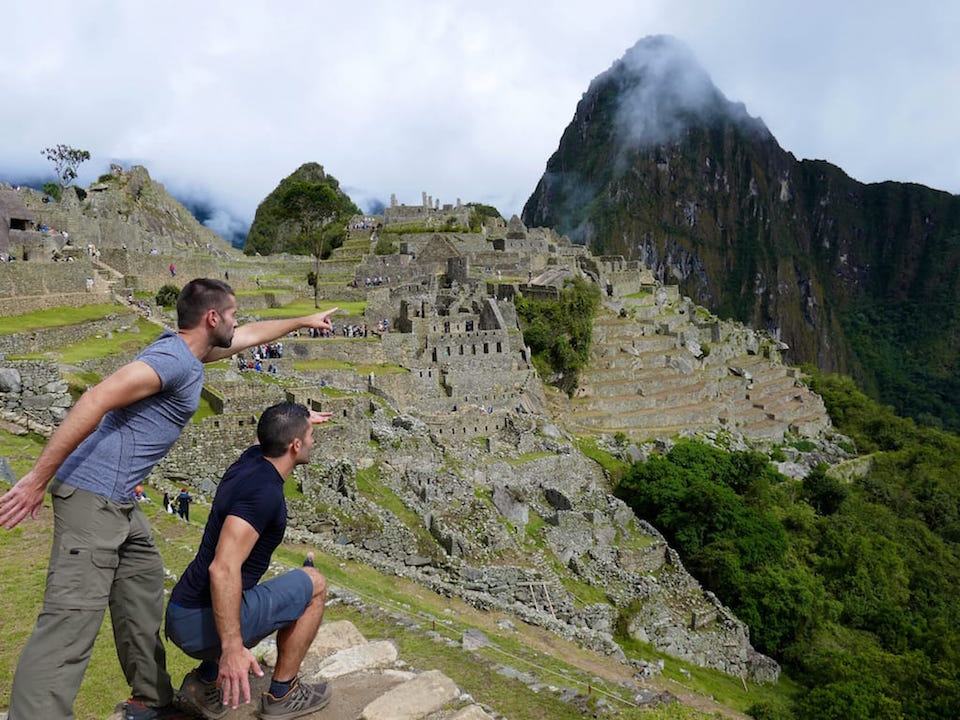
2. Peruvians commonly eat guinea pigs!
We stayed with a host family in Urubamba and we'll never forget their kitchen: in the corner, a heap of hay with a sea of guinea pigs (cuy or cuyes for plural) scurrying around! These were being grown to, later on, be consumed!
Shocking?
Well, what we consider a cuddly household pet is an important food source in Peru. Eating guinea pigs is in fact an ancient Peruvian practice that dates back to the Incas. Peruvians have never seen guinea pigs as “pets” in the same way we do in North American or Europe. In fact, keeping guinea pigs as pets is a more recent habit that developed over the last few centuries.
Guinea pigs are indigenous to South America and have never existed in Europe until the Spanish Conquistador brought a few cuy back with them. Instead of eating them, they fell in love with them, to the point that they've since been domesticated as household pets.
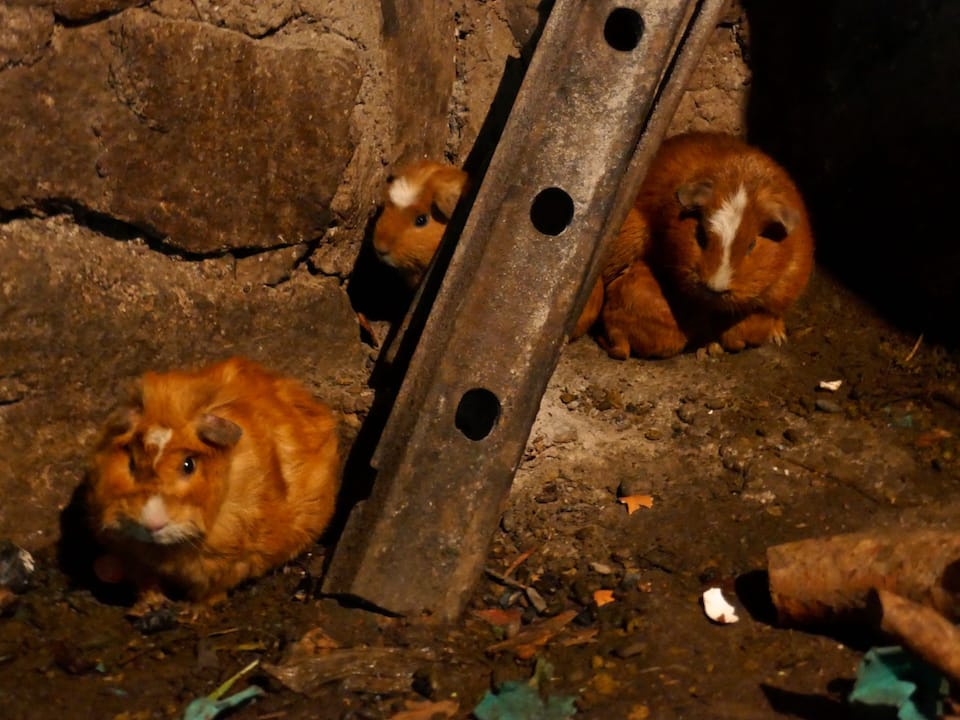
3. Llamas are the Peruvian horse/camel
llamas are ubiquitous throughout Peru. Everywhere you go in the country, you'll see them everywhere…particularly in downtown Cusco where sweet old ladies take them around for tourists to pose with them!
Farming alpacas and llamas is in fact a prominent legacy from the Incas. The llamas are used in the same way as horses – ie mainly for carrying things from A to B. They also stand proud, like camels, with beautiful bulging Bambi-like eyes. Their manure was also an important fertiliser for the Incas, who used to cultivate corn at high altitudes. This is partly why the Inca civilisation was able to flourish in the Andes mountains and conquer a large chunk of South America. Interestingly, llama dung was also used by the Incas as fuel to cook and make ceramics.
Today they still carry goods from A to B for Andean families, but have come to serve more of a touristic purpose as well and can be seen posing in prominent places like Machu Picchu:
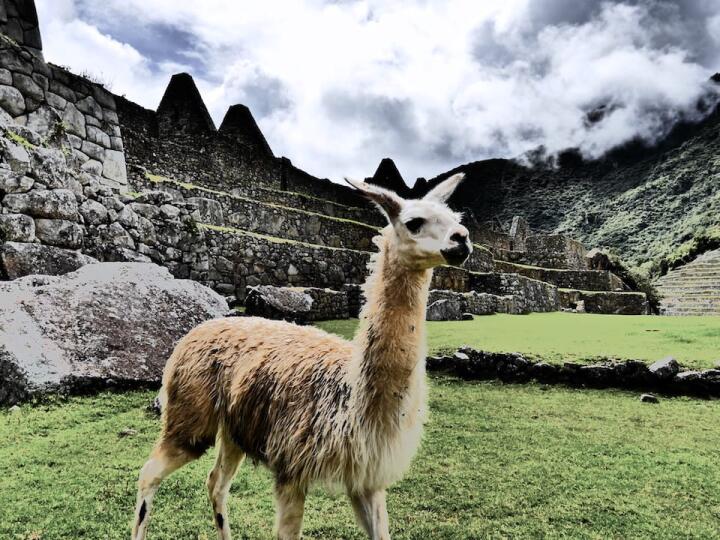
4. Alpacas are the Peruvian sheep
Alpacas are another animal that you'll see all over Peru. In contrast to llamas, alpacas are more similar to sheep. They are smaller, more fluffy, and mainly bred for their wool and meat production.
Alpacas were reared and domesticated by the Incas and continue to be in modern-day Peru. Whilst vegans/vegetarians may be horrified by this, but their meat is very tasty – akin to veal. Alpaca meat is one of the famous traditional Peruvian foods that you'll find throughout the highlands of the country.
As with the llamas, alpacas are also very photogenic and cute, making them a novelty for tourists. What we also love about them is that they cannot live alone! Alpacas are very social animals and thrive the most when they are kept within their own herd. They even take it in turns to sleep at night so that there is always one “keeping watch” to protect the herd! How cute is that?!
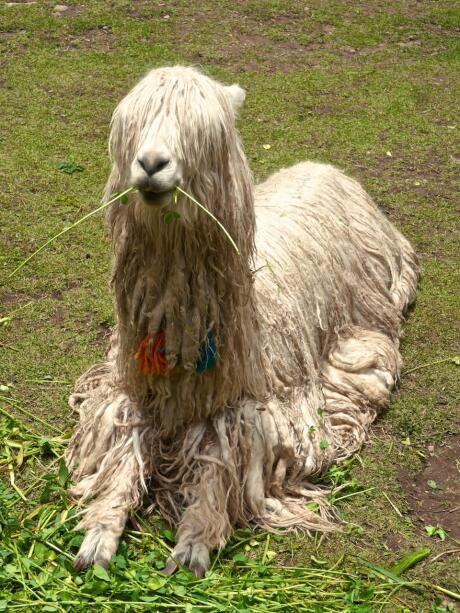
5. Cantua is the National Flower of Peru
The Cantua flowers are the national flower of Peru. They are found at elevations of over 4,000 feet (1,200 meters) in the Andes. They are usually white, yellow, pink, or red in color, and elongated, bell-shaped. Cantua flowers are also known as the sacred flower of the Incas dedicated to Inti, the sun god. As such, they used to be a popular ceremonial flower during the Incan Empire.
Cantua flowers also relate to an ancient Inca legend about two sons waging a war against each other to avenge their fathers (Kings Illimani and Illampu) a war which neither of them wanted but pursued to honor their late fathers. The two sons killed each other in battle but forgave each other just before dying. As such the revered Inca Goddess of fertility, Pachamama, appeared, felt sorry for the boys so she punished their fathers by throwing their stars from the sky. These stars fell on the snow-covered mountains now called Illimani and Illampu in Bolivia.
The snow around these mountains subsequently melted, which signified the tears of regret of the boys. It created a river, which fertilised the valley and from this the Cantua flower blooms!
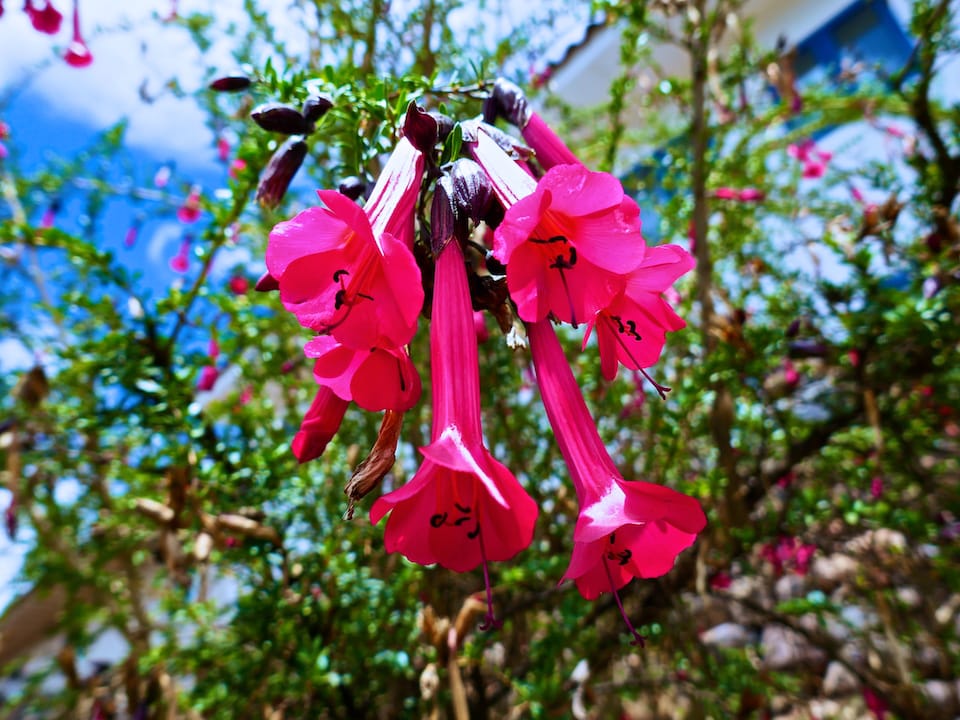
6. Peru is the culinary heart and soul of South America
If you ask anyone in South America where they think is the best place on the whole continent for food, most will say Peru! According to the World Travel Awards, Peru was voted the World's Leading Culinary Destination for 2016, and has won the award every year since 2012.
Just like Penang is well known for being one of the foodie capitals of Asia, Lima is the South American equivalent, famous for being the beating heart of the continent's culinary scene. This is largely due to the waves of immigration from Japan Africa, China and Europe over the last few centuries, which brought with it many new cuisines. Over the years these have blended with the Andean to produce a mix of some of the best fusion food in the world.
Examples include Creole inspired tacu tacu rice and beans, or the lomo saltado stir fry inspired by the Chinese immigrants in Peru. So famous is Peru for food that she gave us world-famous chefs like Martin Morales, Victor Gutierrez, Emmanuel Piqueras Villaran, and Luis Arevalo.
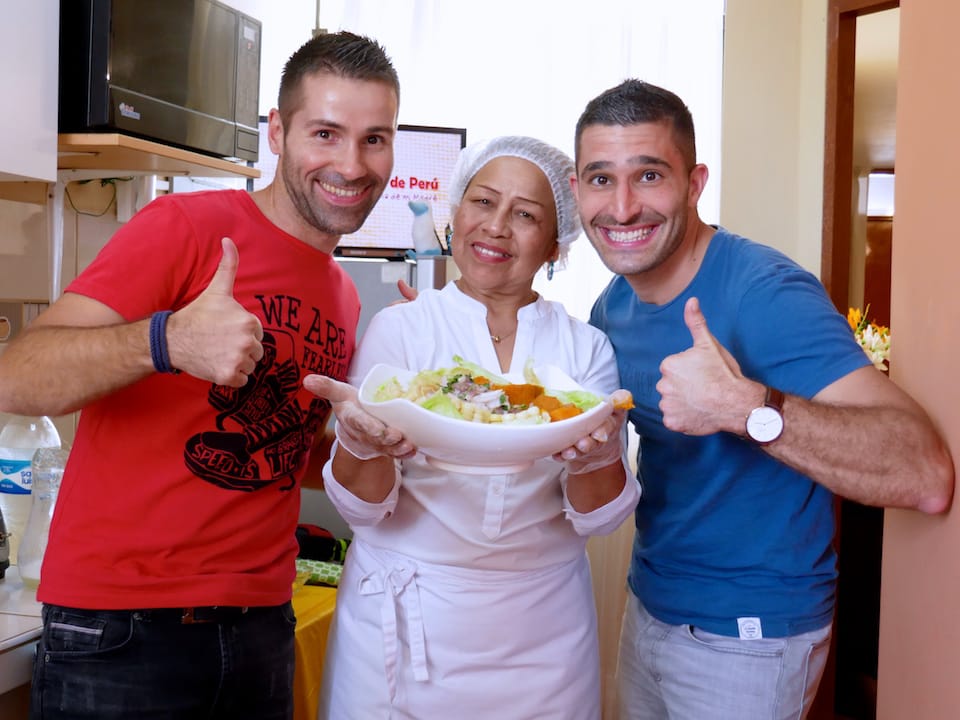
7. Pisco Sour is the National drink
Pisco Sour is the famous Peruvian cocktail that has become a staple in every decent cocktail menu worldwide. We've enjoyed many many Pisco Sours across our travels in Asia, Europe, and now in its birthplace in Peru.
The main ingredient of this delicious cocktail is Pisco, which is colorless brandy made from grapes harvested across 5 coastal valley regions of Peru – Ica, Lima, Arequipa, Moquegua, and Tacna. The cocktail Pisco Sour includes lime juice, egg whites, syrup, and Angostura bitters for serving. And ice of course!
The Pisco Sour cocktail was invented in the early 1920s at Bar Maury in Central Lima by its owner, Victor Vaughen Morris. This cocktail became so popular that it even has its own National Pisco Sour Day: the Día Nacional del Pisco Sour, which is celebrated on the first Saturday of February.
Be sure to check out our recipe for Pisco Sour, courtesy of our friend, Aaron from Lima, who also gave us an interesting insight into what gay life is like in Peru.
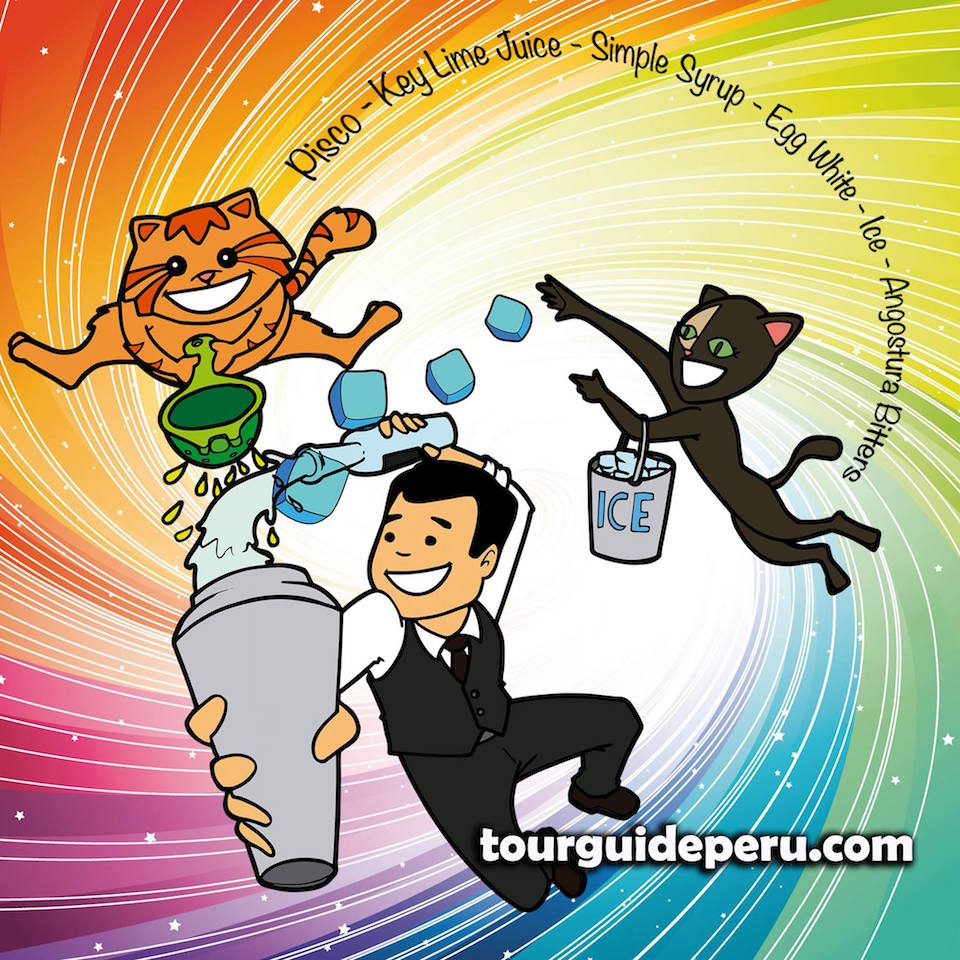
8. Paddington Bear came from Deepest Darkest Peru!
In fact, his real name in Peru is Pastuso!
The story goes that Paddington Bear was sent to London from Peru by his Aunt Lucy who could no longer look after him as she had to live in the Home for Retired Bears in Lima. Paddington sailed from Lima all the way to London in a boat(!) with a tattered hat and an old suitcase in hand.
He was found by the Brown family at Paddington railway station. However, his Peruvian name Pastuso was too difficult for them to pronounce, they instead named him after the rail station they found him.
Paddington Bear is actually a series of children's books published in the 1950s/1960s by British author, Michael Bond and more recently made into several movies. Michael Bond's Paddington Bear is officially from the jungles of “Deepest Darkest Peru” in the North, close to the border with Ecuador. He is celebrated in Miraflores, Lima with a cool statue in Salazar Park near the Larcomar Mall.
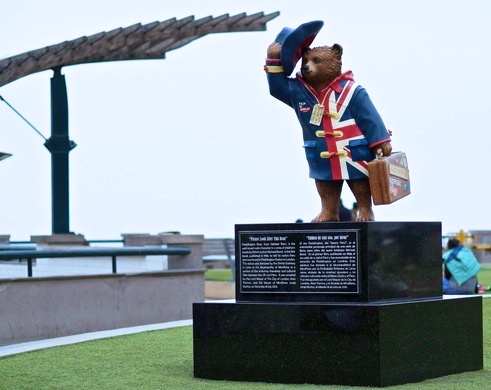
9. Peru gave us the peanut plant
The peanut plant is thought to originate from the foothills of the Andes mountains in Peru. Whilst there is nothing set in stone to show its exact origin (such as fossil records), ancient pottery dated back 3,500 years ago was found in these parts with peanuts decorated on them showing that Peruvian ancestors knew about them long before any of us did!
Peanuts became particularly popular in Peru during the Inca civilization in the 1500s when they were used as sacrificial offerings. The Incas would mummify their dead with peanuts which they thought would bring the deceased good fortune in the afterlife. Following the Incas, the Spanish invaders discovered peanuts, brought them back to Europe where they quickly spread in popularity spread in popularity. This popularity subsequently spread into Asia through the Spice Routes, especially into China and India who today are the leading producers of peanuts.
Yet, despite their novel origin, Peruvians generally don't eat peanuts! Whilst we would enjoy a bowl of peanuts with a drink, in a Peruvian bar, you'll most likely be served toasted corns instead.
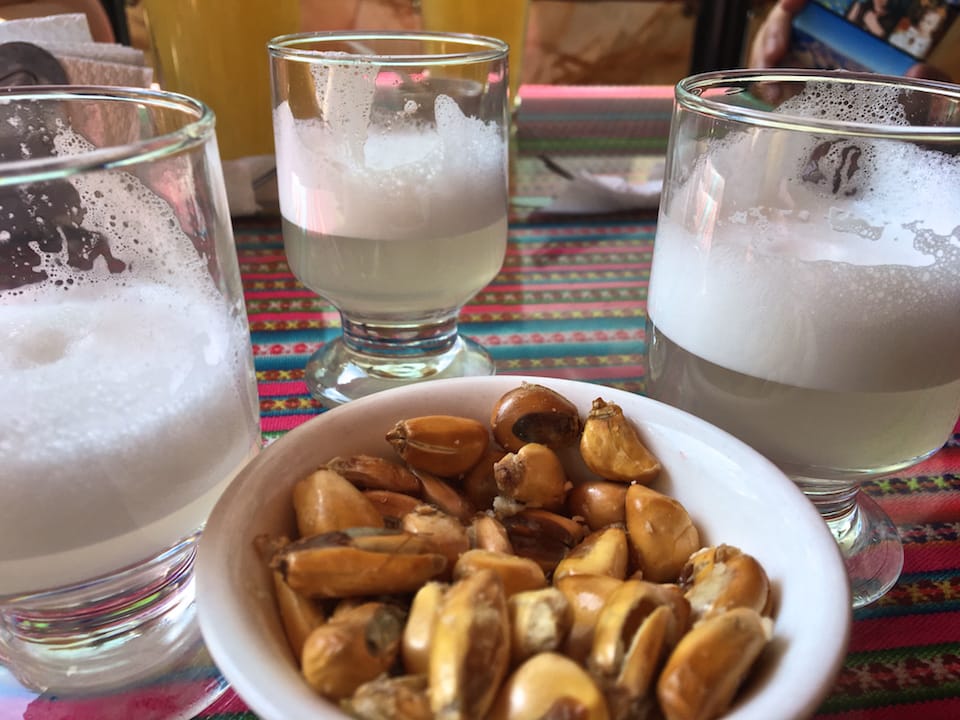
10. Peru also gave us Quinoa!
Quinoa (pronounced KIN wa) is an Andean plant that originated in the area surrounding Lake Titicaca, which straddles the border of Peru and Bolivia. It was cultivated by the Incas and much like guinea pigs and peanuts, it was introduced abroad and therefore grew in popularity.
The quinoa plant itself grows to around 3 to 7 feet high (1-2 meters) and can be green, red, or purple. It has a woody central stem with broad, generally powdery, hairy, lobed leaves. The highlight of the plant is its seeds, which are harvested to eventually become the quinoa we buy in our local supermarket.
One of the main reasons for its popularity is its immense health benefits: it is a source of protein, fiber, iron, copper, thiamin, vitamin B6, magnesium, phosphorus, manganese, and folate. Phew! This is one grain you need to have in your diet – a particularly good friend for vegans and vegetarians.
Not to mention, it's delicious, easy to cook and so versatile: you can prepare so many dishes with it like quinoa salads, sprinkle it on poached eggs, quinoa pancakes, quinoa soup and even quinoa sushi.
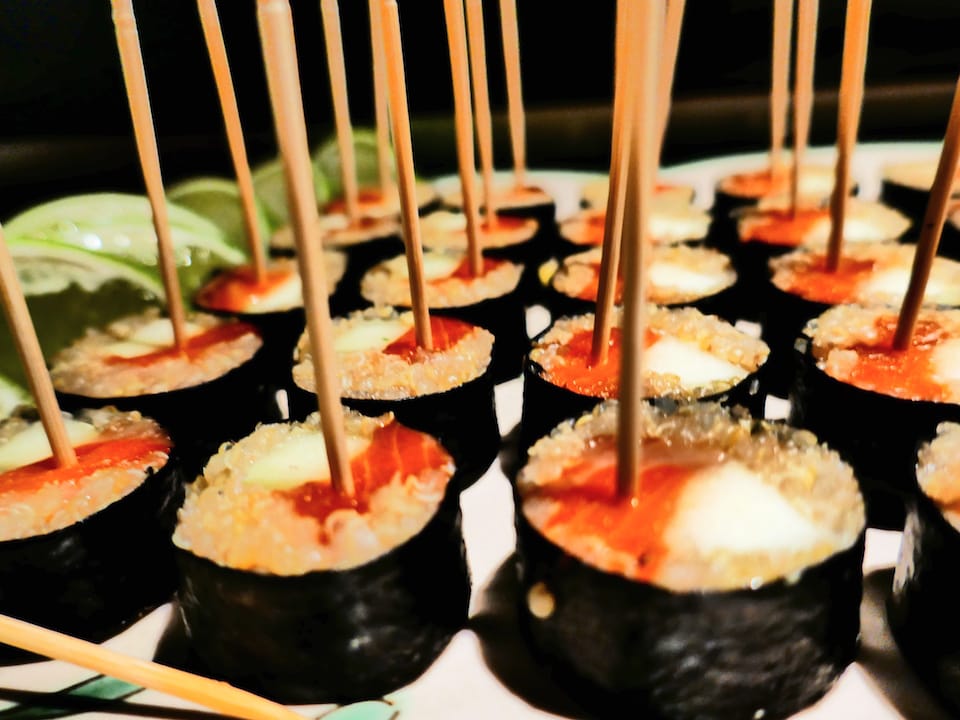
11. …and tomatoes!
You thought tomatoes came from Italy? Guess again…
The wild tomato is in fact indigenous to the area now called Peru, Bolivia, Chile, and Ecuador. This is where one of our most loved fruits emanates from. The wild tomatoes found in Peru here are smaller and not as appetizing as the tomatoes we buy at our local. However, thanks to the Aztecs (further up the continent in modern-day Mexico), they took this wild tomato and cultivated/domesticated it to produce the modern-day tomato we know and love. Spanish invaders then came along in the 1500s and brought it back to Europe with them…
Interestingly, unlike most other new flavors discovered in South America, tomatoes struggled to be accepted by Europeans. At first, they were scared of them, thinking they were dangerous, and poisonous due to the red color.
Over time, Europeans grew less afraid of tomatoes and started to accept them. In the 1800s, commercial cultivation took off massively, and the rest is history!
12. …and potatoes!
Peru is where the potato was first domesticated between 7,000 – 10,000 years ago and after the Spanish arrived these delicious vegetables were spread around the world. There are more than 3,000 varieties of potatoes in Peru today and local Peruvians often say “Soy mas Peruano que la papa” which means “I am more Peruvian than the potato.”
The Incas first saw potatoes growing wild in the area near Lake Titicaca and began to cultivate them as crops, so you can thank them for bringing us the vegetable that makes some of the most delicious dishes in the world! Today potatoes make up many of the best Peruvian dishes, like Papa a la huancaína – a popular appetizer of boiled yellow potatoes in a spicy, creamy sauce called huancaína sauce.
We learned to make it for ourselves (see the picture below) and can assure you it's delicious!
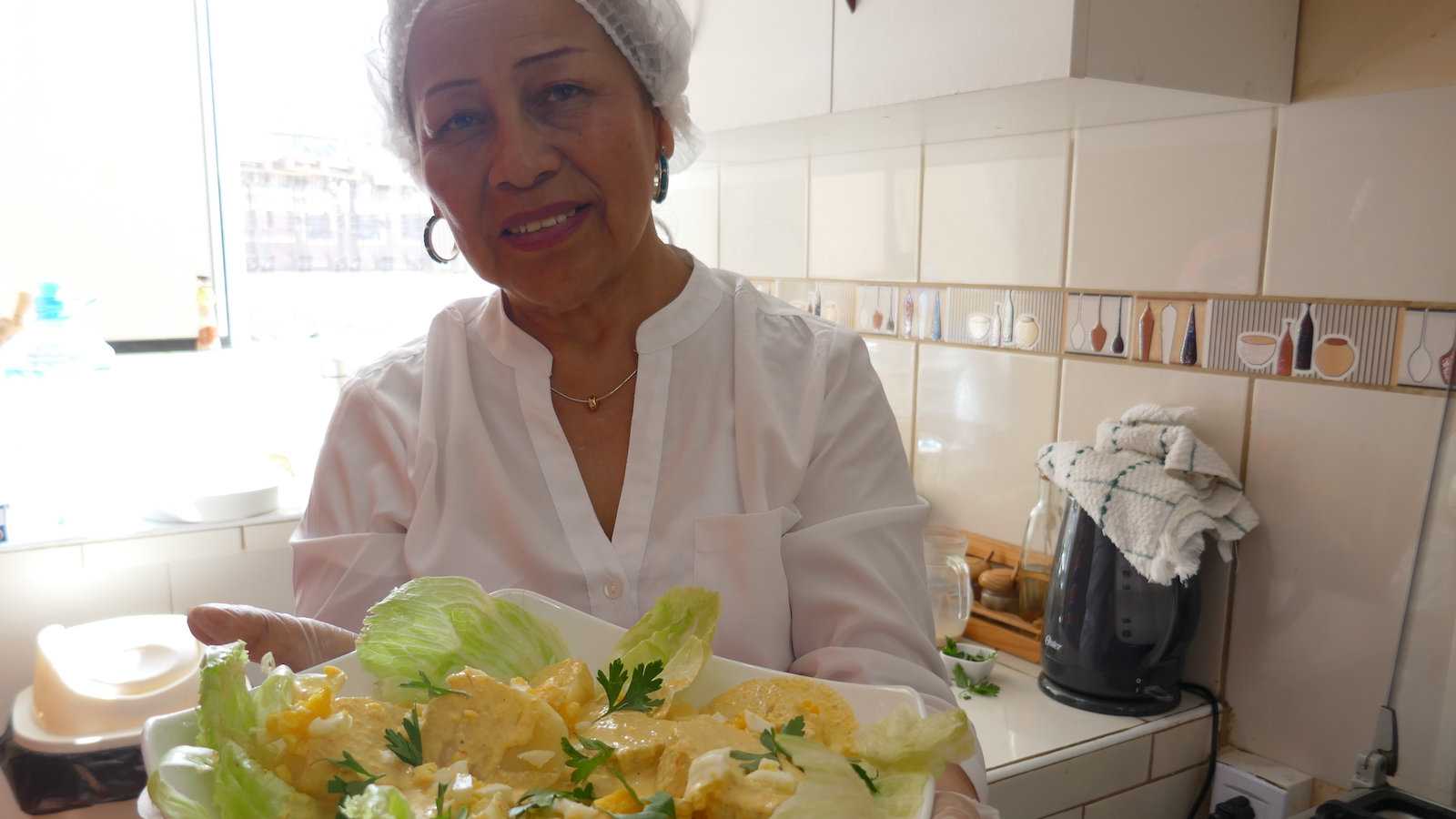
13. Rainbow Mountain
Vinicunca is the name of the famous rainbow-hued mountain in Peru, one of the most popular tourist sites after Machu Picchu. Now, when we say rainbow-hued we actually mean just different colors, not the bright red, orange, yellow, green, blue, indigo and violet you'll see in an actual rainbow. Vinicunca's distinctive colorful stripes are more muted and natural as they're made up of layers of different minerals.
Peru's rainbow mountain gets its famous coloring like this: the pink layer is from clay, the white layer is from quartzose, sandstone and marls, the red is from claystones (iron), the green is from phyllites and clays rich in ferro magnesian, the brown is from fanglomerate rock with magnesium, and the yellow is from calcareous sandstones.

Advice for LGBTQ travellers to Peru
Peru is one of the more socially conservative places in South America. Whilst it has some progressive laws like the right to change gender and anti-discrimination laws, recognition of gay unions is still pending. In the main touristic areas like Miraflores in Lima, central Cusco and Lake Titicaca, you'll have no issues getting a double bed. We never had an issue with this in any of the hotels or guesthouses we stayed at. However, when venturing to more rural areas, be cautious of PDAs. Read more in our interview with Aaron from Lima about what gay life in Peru is like.
You can visit the Rainbow Mountain as a day trip from Cusco. It requires some hiking after a drive and you may need to acclimate to the altitude before you go since the peak of the mountain is about 5,200 meters (over 17,000 feet) high!
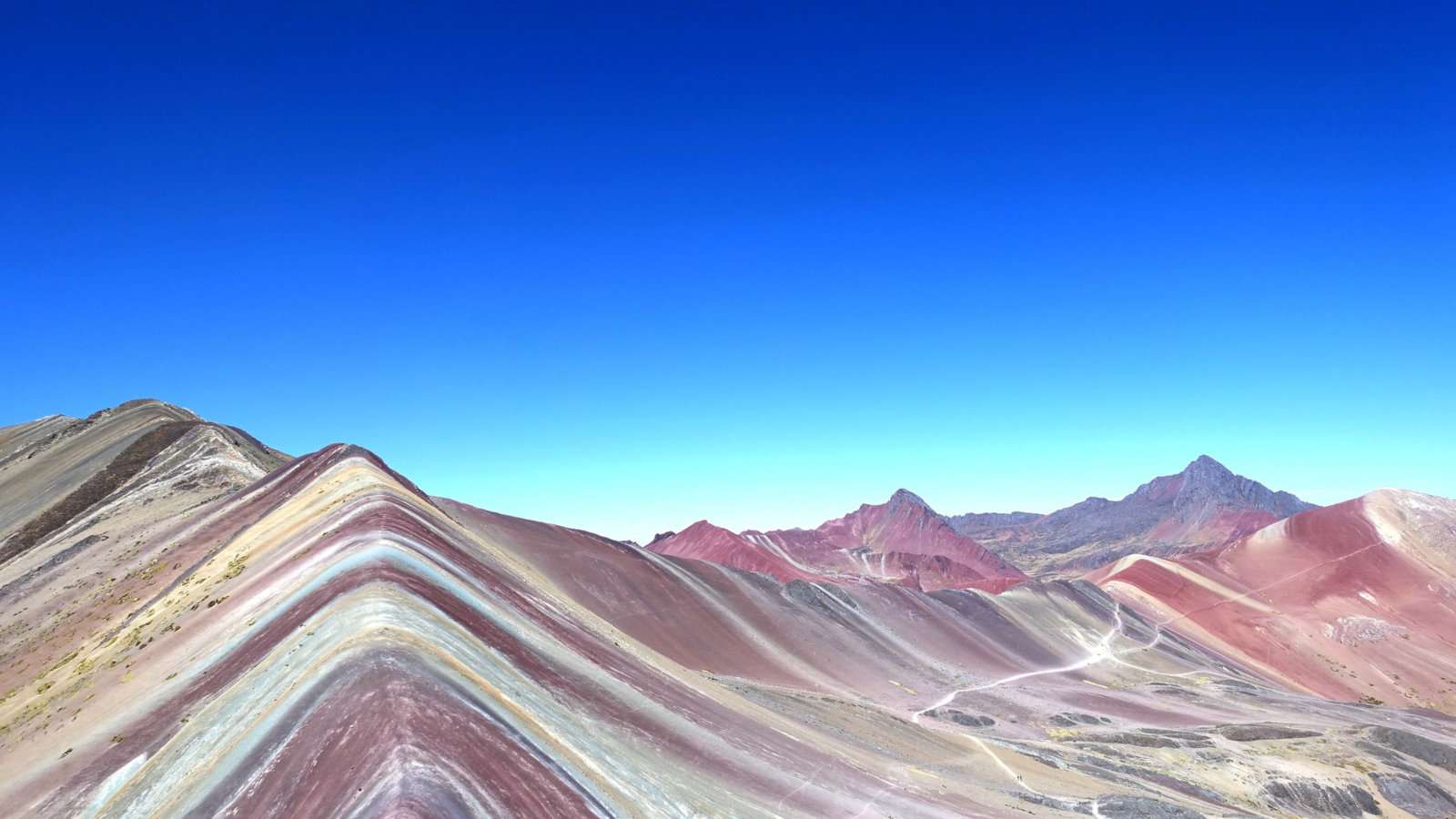
14. Over 50 languages are spoken in Peru
While the official language of Peru is Spanish, the country is actually multilingual, with many indigenous languages also spoken. 84% of the population speak Spanish so it's definitely the main language, with Quechua and Aymara coming in second and third.
Quechua is the most widely spoken indigenous language, mostly in the central and southern highland regions. This was the language that the Incans spread throughout the country during their rule. Only about 1.7% of the population speaks Aymara, but it's still the third most-spoken language in the country. Aymara originated in the region around Lake Titicaca.
The other 47 languages spoken in Peru are a variety of indigenous languages mostly originating in the basin of the Amazon rainforest. Even with this rich variety of languages, you will be able to get by in major cities and tourist destinations with English, but might want to brush up on your Spanish if you're heading off the beaten path.
15. Peru has an alien landing strip!
…at least that's one of the many theories behind the mysterious Nazca Lines…
The Nazca Lines are a series of geoglyphs, or pictures formed in the ground that can be seen from far away, like the Uffington White Horse in England. The ones in Peru were discovered in the Nazca Desert in the 20th century, although it's believed they were created between 500 BCE and 500 CE by the Nazca people who lived in the area at the time.
Some of the Nazca lines are just straight while others make up pictures of things like different types of birds, a spider, a whale, a tree and a monkey. While archaeologists, anthropologists and other experts have figured out how the Nazca people made these geoglyphs, nobody really knows WHY. Popular theories include religious reasons, to show constellations, and as a kind of agricultural calendar.
If you want to see the Nazca Lines for yourself you'll need to catch a bus from Lima to Nazca and then either climb the observation tower for free (where you can see three of the shapes) or fork out some cash (about 80 USD) for a scenic flight.
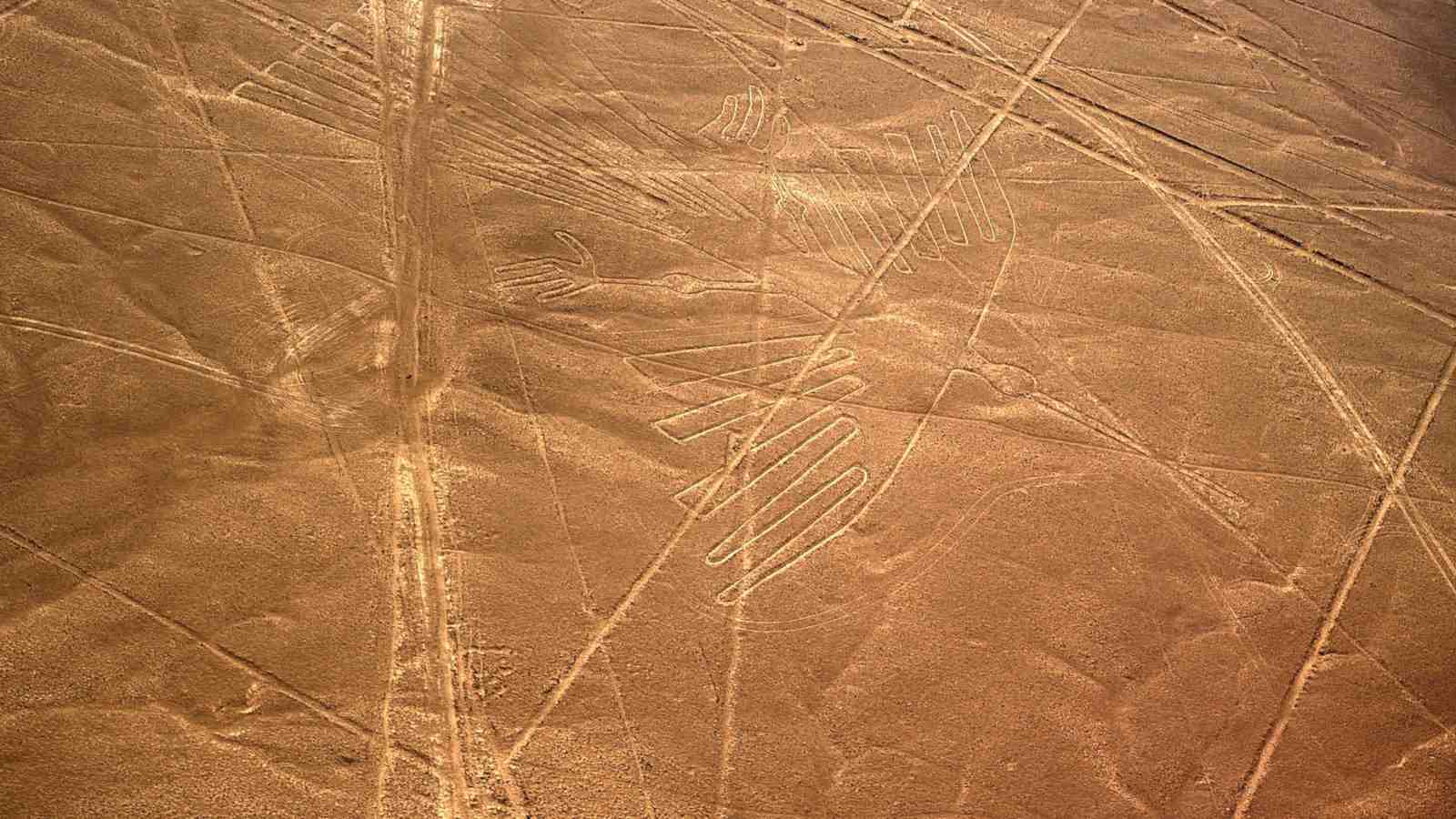
16. Coca leaves have many health benefits
Coca leaves historically got a bad rep when people discovered they can make cocaine from it. But in actual fact, the leaves of the coca plant can be used to relieve pain and hunger or even help with altitude sickness. That's because this plant is packed full of iron, and the vitamins B and C.
Historically, the coca plant was sacred to the Incans. They used it in religious rituals, read its leaves to tell the future and even buried coca leaves with the dead so they could take it to the afterlife. Chewing the leaves or brewing a tea gives you all the benefits of coca without any harm. It's only after the concentrated cocaine alkaloid is extracted from the plant that issues arise.
Remember, the fizzy drink of Coca-Cola that's available worldwide used to have cocaine in it, although now a decocainized extract of the leaf is used as flavoring. So, if you're ever offered coca tea in Peru, don't turn it down, especially if you're suffering any altitude sickness, as it might just help!
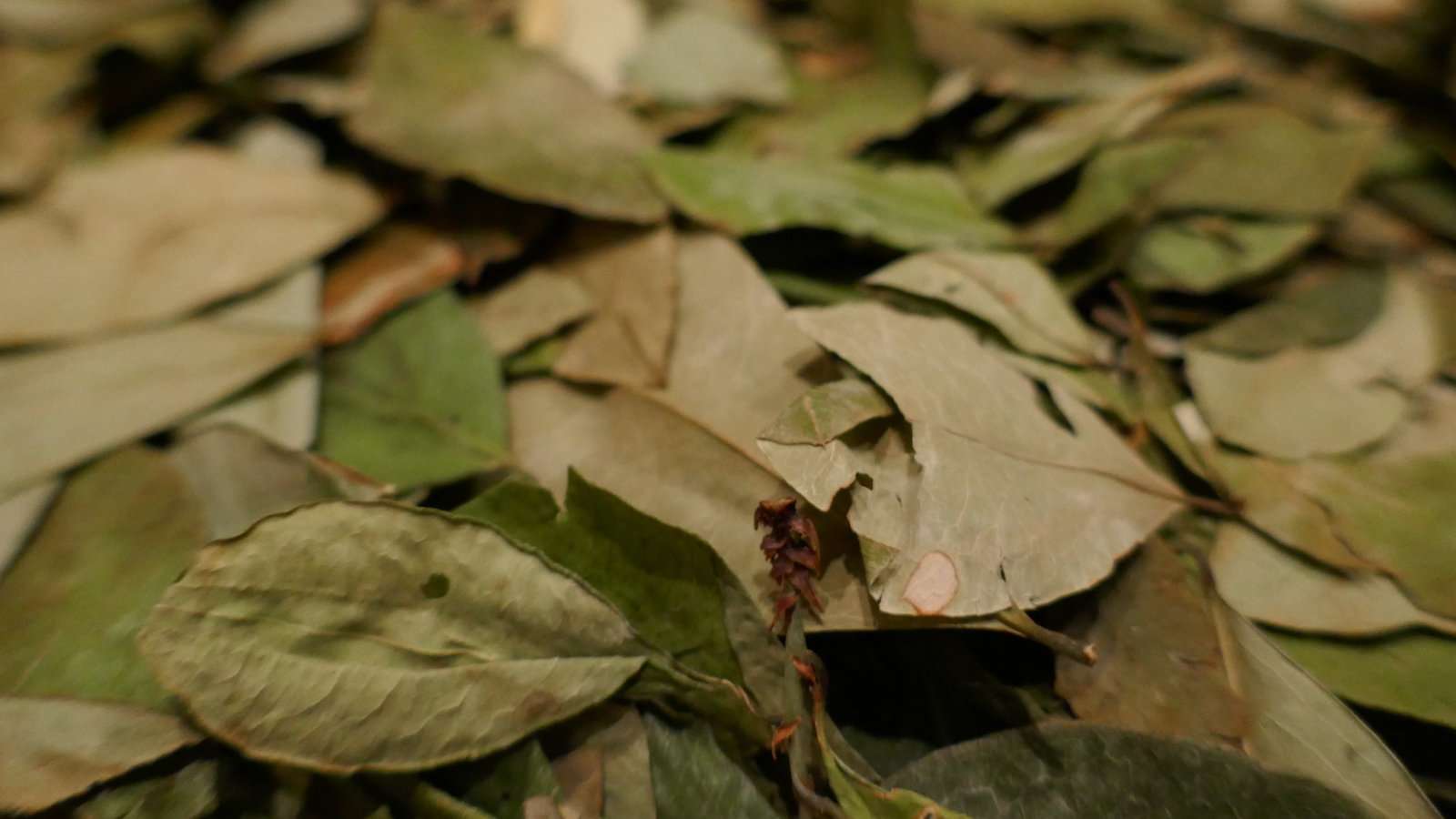
For more inspiration:
- Get inspired with our experience trekking the Inca Trail to Machu Picchu as a gay couple
- Discover the most delicious Peruvian foods
- Try our recipe for Peruvian ceviche as well
- Use our Peru LGBTQ travel itinerary and our guide to the best gay hotels in Peru
- We give you the lowdown about whether Lake Titicaca is worth visiting
- Check out our gay city guide to Lima
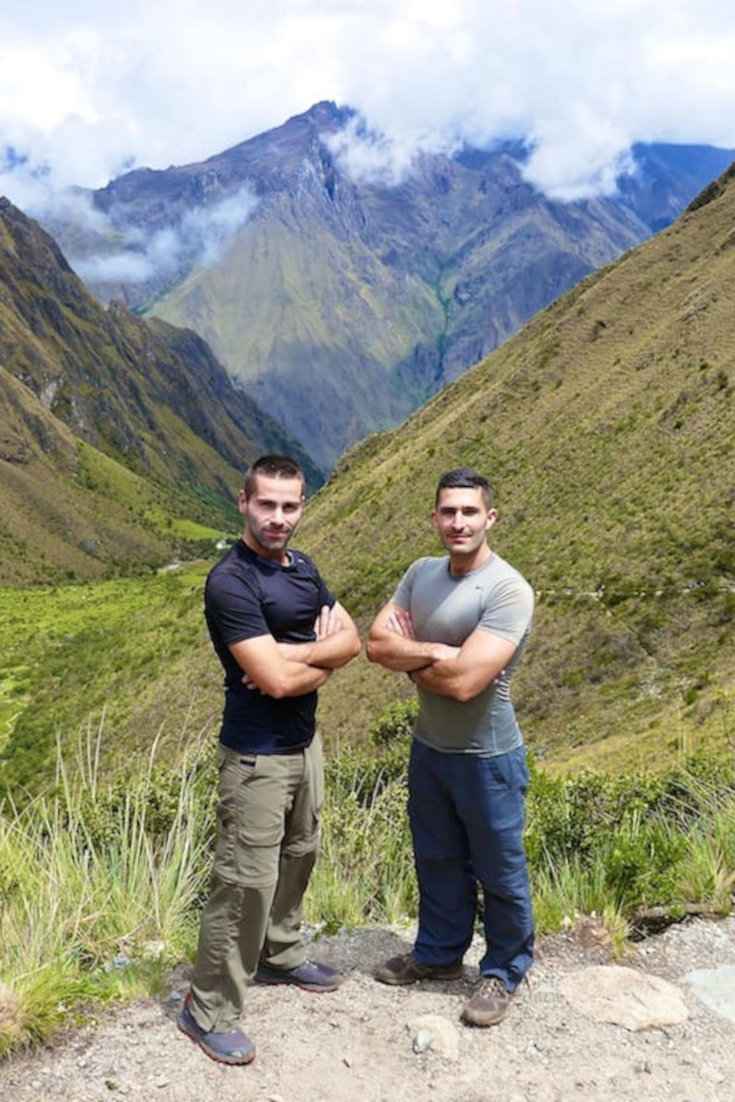

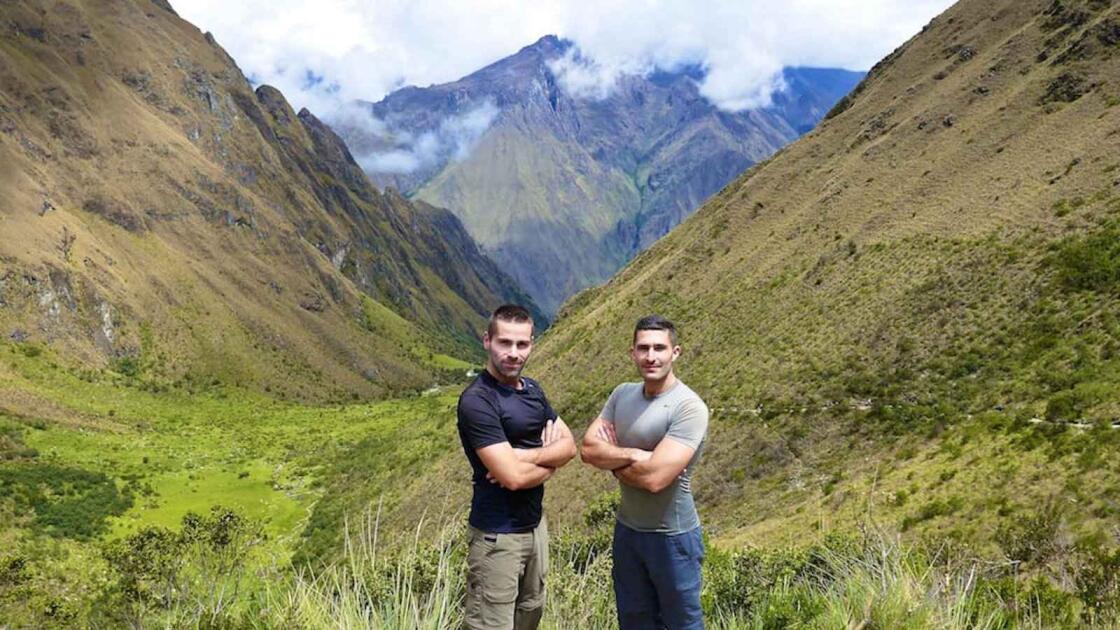

Ernesto teves
Sunday 22nd of September 2019
Your pronunciation of quinoa is all wet,it is pronounce...key no ah....take from me, I am Peruvian , you have forgaten to talk about the best of delicacies which is.....anticuchos, a marinated beef heart stuck into wooden sticks and barbecue over high flame, most of the time, prepared on any street corner by ambulant Peruvian cooks...Delicious.....
Stefan Arestis
Sunday 22nd of September 2019
Peruvian food is delicious :)
Angie (FeetDoTravel)
Wednesday 7th of February 2018
These facts are fantastic! As I'm from the UK, I found the Paddington Bear history to be very fascinating! Pinned for when I visit Peru, thanks for the interesting info #feetdotravel
Nomadic boys
Wednesday 7th of February 2018
Thanks for reading Angie
Carolin
Friday 5th of May 2017
Peru is where I started loving Quinoa - it has been part of my diet ever since :-P
Nomadic boys
Friday 5th of May 2017
Right? Gotta love it ?
ETA Australia
Wednesday 3rd of May 2017
This is very interesting. I haven't known that Cuyes are one of the most important sources of foods during the ancient time, I thought they were just a cute pets. Technically speaking, Incan Empire is very rich.
Nomadic boys
Wednesday 3rd of May 2017
Right?
Ryan Biddulph
Tuesday 2nd of May 2017
I recall feasting on those taters in Cusco guys. I'd hit the local market, work over the potato section and pick a handful to prepare in a few different ways. Those Peruvian potatoes are meaty!
Ryan
Nomadic boys
Tuesday 2nd of May 2017
Agreed :)